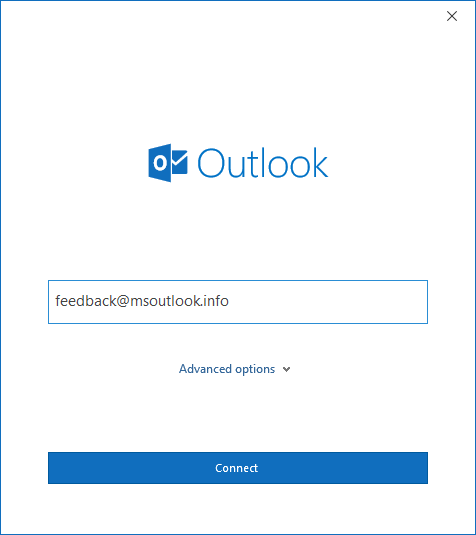

However, if you configure the Autodiscover registry/policy values incorrectly, you may prevent Outlook from obtaining Autodiscover information.

In some scenarios, you may want to use Autodiscover-related registry/policy values to control the method(s) used by Outlook to reach Autodiscover.

Cached URL in the Outlook profile (new for Outlook 2010 version.The currently implemented methods used by Outlook are: When Outlook tries to contact the Autodiscover service on the Exchange server with the Client Access Server (CAS) role, it can use several different methods to reach the service, depending on the client-server topology. When Microsoft Outlook tries to retrieve Autodiscover information from a server that's running Microsoft Exchange Server, you may experience unexpected results if you're using one or more of the available registry values that can be used to control Autodiscover. New-Item c:\AutoDiscover\autoDiscover-$domainName.xml -ItemType File | Out-NullĪdd-Content c:\AutoDiscover\autoDiscover-$domainName.Unexpected Autodiscover behavior when you have registry settings under the \Autodiscover key Symptoms New-Item c:\AutoDiscover -ItemType Directory | Out-Null New-ItemProperty -Path $regPath -Name ExcludeSrvRecord -propertyType DWORD -Value 1 | Out-Null New-ItemProperty -Path $regPath -Name ExcludeScpLookup -propertyType DWORD -Value 1 | Out-Null New-ItemProperty -Path $regPath -Name ExcludeHttpsRootDomain -propertyType DWORD -Value 1 | Out-Null New-ItemProperty -Path $regPath -Name ExcludeHttpsAutoDiscoverDomain -propertyType DWORD -Value 0 | Out-Null New-ItemProperty -Path $regPath -Name ExcludeHttpRedirect -propertyType DWORD -Value 0 | Out-Null New-ItemProperty -Path $regPath -Name PreferLocalXML -propertyType DWORD -Value 1 | Out-Null New-ItemProperty $regPath -Name $domainName -PropertyType STRING -Value c:\autodiscover\autodiscover-$domainName.xml | Out-Null Write-Output "Office Version : $officeVer" If(($office | Measure-Object).Count -gt 1) $office = Get-ChildItem "HKLM:\SOFTWARE\Microsoft\Office" | sort Name -Descending | where $domainName = Read-Host -Prompt "Enter Domain Name" # Create Reg Entry for Local User and Folder / XML if Needed It also then sets up the other registry entries and disables the ones we do not want to use, leaving only PreferLocalXML, HTTPRedirect, and HTTPSAutoDiscoverDomain enabled. The script takes input in the form of a domain name, configures the PreferLocalXML DWORD, the REG_SZ (string) for the domain name, and sets up the XML file. Never one to shy away from the chance to automate something, I created a small script to do this for me. Or for another domain name, it may look like this: Configuring this requires setting at least two registry entries and creating an XML file, which has to contain the AutoDiscover URL for that specific domain.įor example if your domain was using Office 365, your XML may look like this: The solution for this is to use the registry to control Outlook's behavior, and the method I have used is to set the PreferLocalXML DWORD entry. It will then attempt to configure Outlook to talk to that instead of moving on to talk to your Exchange Server. When this is true, and you attempt to AutoDiscover an Outlook account to your Exchange Server, AutoDiscover will find the IMAP service at the root of the domain. The scenario is that the web server a client has their public website running on also accepts IMAP connections.


 0 kommentar(er)
0 kommentar(er)
